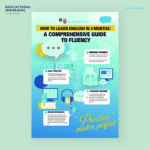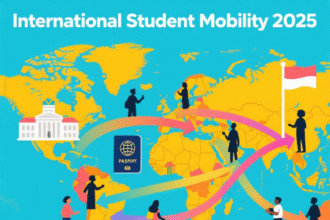The global education landscape is undergoing transformative changes, with the new education policy changes in USA, UK, and Canada in 2025 reshaping how students learn, teachers educate, and institutions operate. These reforms address modern challenges such as technological integration, inclusivity, workforce alignment, and global competitiveness. We explore the intricate details of these policy shifts, their implications, and how they aim to redefine education systems across these nations. This article provides an in-depth, authoritative look at the latest developments, offering educators, policymakers, students, and parents a clear understanding of what lies ahead.
- Education Policy Reforms in the United States for 2025
- Federal Funding and Policy Uncertainty
- Addressing Teacher Shortages
- Focus on Student-Centered Learning
- Project 2025 and Its Implications
- Technology and Innovation in Classrooms
- Education Policy Reforms in the United Kingdom for 2025
- Skills England and the Growth and Skills Levy
- Early Childhood Education Expansion
- Special Educational Needs and Disabilities (SEND) Reforms
- Teacher Qualifications and Recruitment
- Mobile Phone Bans and Behavior Management
- Education Policy Reforms in Canada for 2025
- International Student Permit Caps
- Work Restrictions for International Students
- Technology and Innovation in Education
- Federal Election Implications
- Comparative Analysis of Education Policy Changes
- Implications for Stakeholders
- Future Outlook for Education in 2025
- Recommendations and Suggestions
- FAQs
Education Policy Reforms in the United States for 2025
The United States is navigating a complex educational environment in 2025, with new education policy changes addressing funding uncertainties, teacher shortages, and equity gaps. Federal and state-level reforms are designed to empower local districts, enhance student outcomes, and integrate innovative teaching models.
Federal Funding and Policy Uncertainty
The U.S. education system is grappling with significant federal funding challenges. In 2025, billions in federal education funds remain frozen due to ongoing restructuring at the U.S. Department of Education. This has led to uncertainty in compliance, certification, and program oversight, particularly for special education and multilingual learner services, which have been shifted to other agencies. Local school districts face the burden of navigating these changes without clear federal guidance.
- Impact on Schools: Districts are forced to make high-stakes decisions, such as reallocating budgets or restructuring programs, without a safety net.
- Proposed Solutions: Policies emphasize flexibility for districts to adapt to local needs, with scalable instructional models and technology integration to address resource constraints.
Addressing Teacher Shortages
Teacher recruitment and retention remain critical issues. In 2025, states are implementing innovative strategies to strengthen teacher pipelines.
- State-Sponsored Apprenticeships: Programs provide hands-on experience and mentorship for aspiring educators, creating accessible pathways into teaching.
- Alternative Certification: Expanded options allow professionals from diverse backgrounds, such as artists or engineers, to enter classrooms, enriching student experiences.
- Incentives: Competitive salaries, loan forgiveness, and professional development opportunities aim to retain qualified educators.
Focus on Student-Centered Learning
The new education policy changes in USA prioritize personalized learning to address academic gaps and chronic absenteeism. Schools are adopting data-driven approaches to understand student needs beyond test scores, incorporating classroom behavior, engagement levels, and mental health metrics.
- Technology Integration: AI-driven tools and personalized learning platforms enable tailored instruction, helping students recover from learning disruptions.
- Holistic Support: Policies emphasize mental health resources, community partnerships, and wraparound services to address non-academic barriers to learning.
Project 2025 and Its Implications
The conservative blueprint known as Project 2025 proposes sweeping changes to federal education policy. While not fully implemented, its recommendations influence state-level reforms.
- Federal Scholarship Tax Credits: Encourages private school tuition through nonprofit scholarships, aiming to expand parental choice.
- School Meal Program Reforms: Suggests scaling back universal free meal programs to focus on low-income families, streamlining federal spending.
- Special Education Adjustments: Proposes converting the Individuals with Disabilities Education Act (IDEA) funding into block grants, giving states more flexibility but potentially reducing oversight.
These changes aim to decentralize education control, prioritizing local decision-making. However, critics argue they may exacerbate inequities if not paired with robust accountability measures.
Technology and Innovation in Classrooms
The integration of educational technology (EdTech) is a cornerstone of 2025 reforms. The Future of Education Technology Conference (FETC) in Orlando highlights AI, data analytics, and personalized learning environments as key drivers of change.
- AI in Education: Tools like AI-powered tutoring systems adapt to individual student needs, improving outcomes in subjects like math and reading.
- Data Analytics: Schools use real-time data to track progress, identify gaps, and adjust curricula dynamically.
- Hybrid Learning Models: Combining in-person and online instruction ensures flexibility, especially in understaffed districts.
Education Policy Reforms in the United Kingdom for 2025
The United Kingdom is undergoing a significant transformation in its education sector, driven by the Labour Government’s first full year in power. The new education policy changes in UK focus on early childhood education, skills development, and inclusivity, with a particular emphasis on preparing students for a rapidly changing economy.
Skills England and the Growth and Skills Levy
Skills England, the successor to the Institute for Apprenticeships and Technical Education, is central to the UK’s 2025 education strategy. It aims to align workforce skills with economic needs through a unified post-16 national strategy.
- Key Objectives: Identify and address skills gaps in sectors like technology, healthcare, and green energy.
- Growth and Skills Levy: Replaces the Apprenticeship Levy, allowing a proportion of funds to be used for non-apprenticeship training, though the exact percentage remains undefined.
- Challenges: Concerns include reduced employer consultation and the downgrading of Skills England’s leadership structure, potentially impacting effectiveness.
Early Childhood Education Expansion
The government has set an ambitious target to increase the percentage of “school-ready” children by age five from 67.7% to 75%. This involves expanding childcare access and establishing 3,000 new or expanded school-based nurseries by September 2025.
- Childcare Funding: 30 hours of government-funded childcare for eligible families, reducing financial burdens.
- Workforce Training: Partnerships with the education sector to enhance training for early childhood educators, ensuring high-quality care.
- Infrastructure Development: £300 million allocated in the 2025-2026 budget to support nursery expansion, though critics argue this is insufficient.
Special Educational Needs and Disabilities (SEND) Reforms
The SEND Review continues to shape UK education policy in 2025, addressing the growing number of students requiring support.
- National Standards Framework: Set for full implementation by the end of 2025, this framework standardizes support across schools, ensuring consistency.
- EHCP Overhaul: A digitized Education, Health and Care Plan (EHCP) system reduces delays, though implementation varies by region.
- Funding Increase: An additional £2.6 billion over three years to expand specialist school capacity and improve mainstream inclusion.
Teacher Qualifications and Recruitment
A significant policy shift requires all new teachers to hold or be working toward Qualified Teacher Status (QTS). While only 3.6% of current teachers lack QTS, this change may limit the hiring of industry experts, such as musicians or sports professionals, in academies.
- Recruitment Challenges: The government aims to recruit 6,500 new teachers, but the QTS requirement could restrict candidate pools during a recruitment crisis.
- Retention Strategies: Enhanced professional development, mental health support, and competitive pay aim to retain educators.
Mobile Phone Bans and Behavior Management
To create distraction-free learning environments, the UK is implementing stricter mobile phone policies in schools.
- Policy Details: Non-statutory guidance encourages schools to ban mobile phones during school hours, with options like phone lockers or pouches.
- National Behaviour Hubs: Share best practices for managing classroom behavior, addressing persistent absence and mental health challenges.
- Attendance Mentors: Trained staff work with at-risk families to improve student attendance rates.
Education Policy Reforms in Canada for 2025
Canada’s education system, known for its inclusivity and high quality, faces challenges from policy shifts aimed at balancing domestic pressures with international student contributions. The new education policy changes in Canada in 2025 focus on immigration controls, affordability, and technological integration.
International Student Permit Caps
To address housing shortages and immigration pressures, Canada has reduced study permit caps to 437,000 in 2025, a 10% decrease from 2024.
- Provincial Attestation Letters (PAL): Students must obtain a PAL from their chosen province, complicating the application process.
- Economic Impact: International students contribute over $22 billion annually, and reduced intake may strain university budgets and local economies.
- Reputational Risks: Restrictive policies could deter high-caliber talent, impacting Canada’s status as a global education destination.
Work Restrictions for International Students
New policies limit work opportunities for international students and their families.
- Work Hour Limits: The policy allowing students to work over 20 hours per week has lapsed, restricting income sources.
- Post-Graduate Work Permits (PGWP): Students at private colleges in certain programs are ineligible for PGWPs, and spousal work permits are limited to graduate-level students’ partners.
- Mitigation Strategies: Universities are diversifying recruitment to emerging markets and enhancing international collaboration to maintain diversity.
Technology and Innovation in Education
The Emerge Education Summit in Toronto highlights Canada’s focus on integrating AI, accessibility, and teacher development in 2025.
- AI Integration: Microlearning and AR/VR technologies enhance classroom engagement and accessibility.
- Teacher Development: Hackathons and design-thinking workshops train educators to adopt innovative teaching methods.
- Policy Roundtables: Discussions focus on balancing technological advancements with equitable access for all students.
Federal Election Implications
With federal elections scheduled by October 2025, education policies may shift based on political priorities.
- Potential Outcomes: Some parties advocate stricter immigration controls, while others emphasize the socio-economic benefits of international students.
- Stakeholder Advocacy: The Canadian Bureau for International Education (CBIE) calls for balanced policies that maintain Canada’s competitive edge in global education.
Comparative Analysis of Education Policy Changes
While the new education policy changes in USA, UK, and Canada share common goals—improving student outcomes, addressing workforce needs, and integrating technology—each nation faces unique challenges.
- United States: Focuses on decentralizing control, addressing funding uncertainties, and empowering local districts with flexible solutions.
- United Kingdom: Prioritizes early childhood education, skills alignment, and SEND support, with a strong emphasis on vocational training.
- Canada: Balances domestic pressures with international student contributions, navigating immigration reforms and technological advancements.
Implications for Stakeholders
These reforms impact students, educators, parents, and policymakers differently.
- Students: Benefit from personalized learning and expanded early childhood access but face challenges from funding uncertainties and immigration restrictions.
- Educators: Gain from professional development and innovative teaching tools but navigate recruitment challenges and policy shifts.
- Parents: Access expanded childcare and SEND support but must adapt to changing school policies, such as mobile phone bans.
- Policymakers: Must balance local needs with global competitiveness, ensuring equitable access and sustainable funding.
Future Outlook for Education in 2025
The new education policy changes in USA, UK, and Canada signal a shift toward more inclusive, technology-driven, and workforce-aligned education systems. However, challenges such as funding shortages, teacher retention, and immigration policies require ongoing collaboration between governments, schools, and communities. By prioritizing evidence-based policies and stakeholder engagement, these nations can build resilient education systems that prepare students for a dynamic future.
Recommendations and Suggestions
To navigate these changes effectively, we recommend:
- For Schools: Invest in AI-driven tools and teacher training to enhance personalized learning and address staffing shortages.
- For Policymakers: Ensure robust accountability measures accompany funding flexibility to prevent inequities.
- For Parents and Students: Stay informed about policy changes, engage with school resources, and explore vocational and digital learning opportunities.
- For International Students: Research visa and work permit policies thoroughly and consider alternative study destinations like Canada or the UK if U.S. restrictions tighten.
FAQs
- What are the new education policy changes in the USA for 2025?
Reforms include addressing funding freezes, expanding teacher recruitment through apprenticeships, and integrating AI-driven personalized learning. - How is the UK transforming its education system in 2025?
The UK is implementing Skills England, expanding early childhood education, and standardizing SEND support with a National Standards Framework. - What changes are affecting international students in Canada in 2025?
Canada has reduced study permit caps to 437,000 and introduced work restrictions, impacting international students’ financial and post-study opportunities. - How does Skills England impact UK education?
Skills England aligns post-16 education with economic needs through the Growth and Skills Levy, focusing on sectors like technology and healthcare. - What is Project 2025 in the USA?
Project 2025 is a conservative blueprint proposing federal scholarship tax credits, school meal program reforms, and IDEA funding changes. - How are mobile phones regulated in UK schools in 2025?
Non-statutory guidance encourages schools to ban mobile phones during school hours, using lockers or pouches to minimize distractions. - What is the SEND Review in the UK?
The SEND Review standardizes support for students with special needs, with a £2.6 billion funding boost and a digitized EHCP system. - How do teacher shortages affect U.S. schools in 2025?
Shortages lead to innovative recruitment strategies like apprenticeships and alternative certifications to diversify teacher pipelines. - Why is Canada capping international student permits?
The cap addresses housing shortages and immigration pressures, reducing permits by 10% from 2024 levels. - What role does AI play in 2025 education reforms?
AI enhances personalized learning, data analytics, and classroom engagement in all three countries. - How are early childhood education policies changing in the UK?
The UK aims to increase “school-ready” children to 75% by expanding childcare and opening 3,000 new nurseries. - What are the challenges of U.S. education funding in 2025?
Frozen federal funds and Department of Education restructuring create uncertainty for districts. - How do Canadian work restrictions impact international students?
Restrictions limit work hours and post-graduate work permits, affecting students’ financial stability. - What are T-Levels in the UK?
T-Levels are vocational qualifications in 24 subject areas, including healthcare and digital, emphasizing practical skills. - How can stakeholders prepare for 2025 education changes?
Stay informed, leverage technology, and engage with school and government resources to adapt to reforms.




















